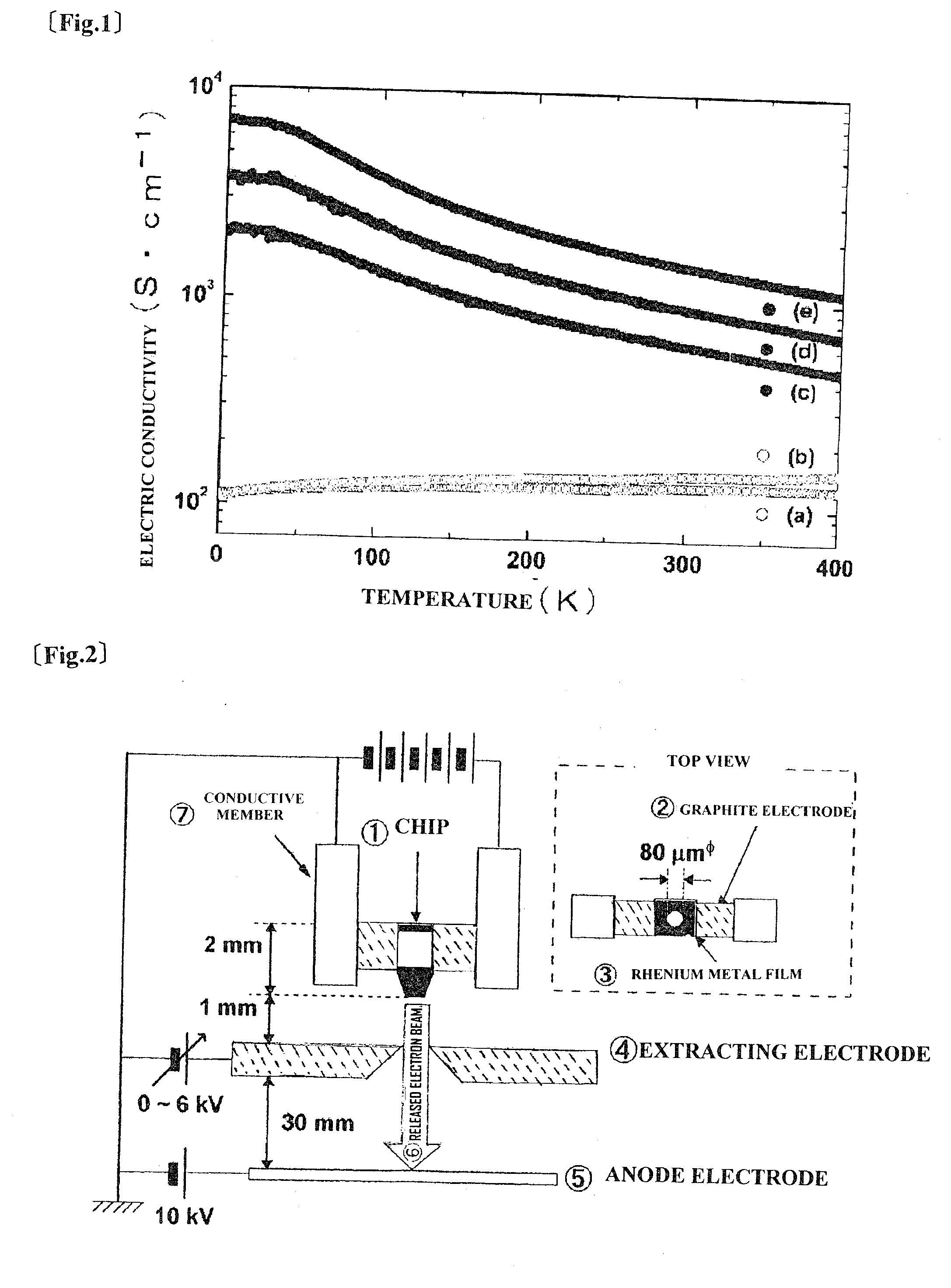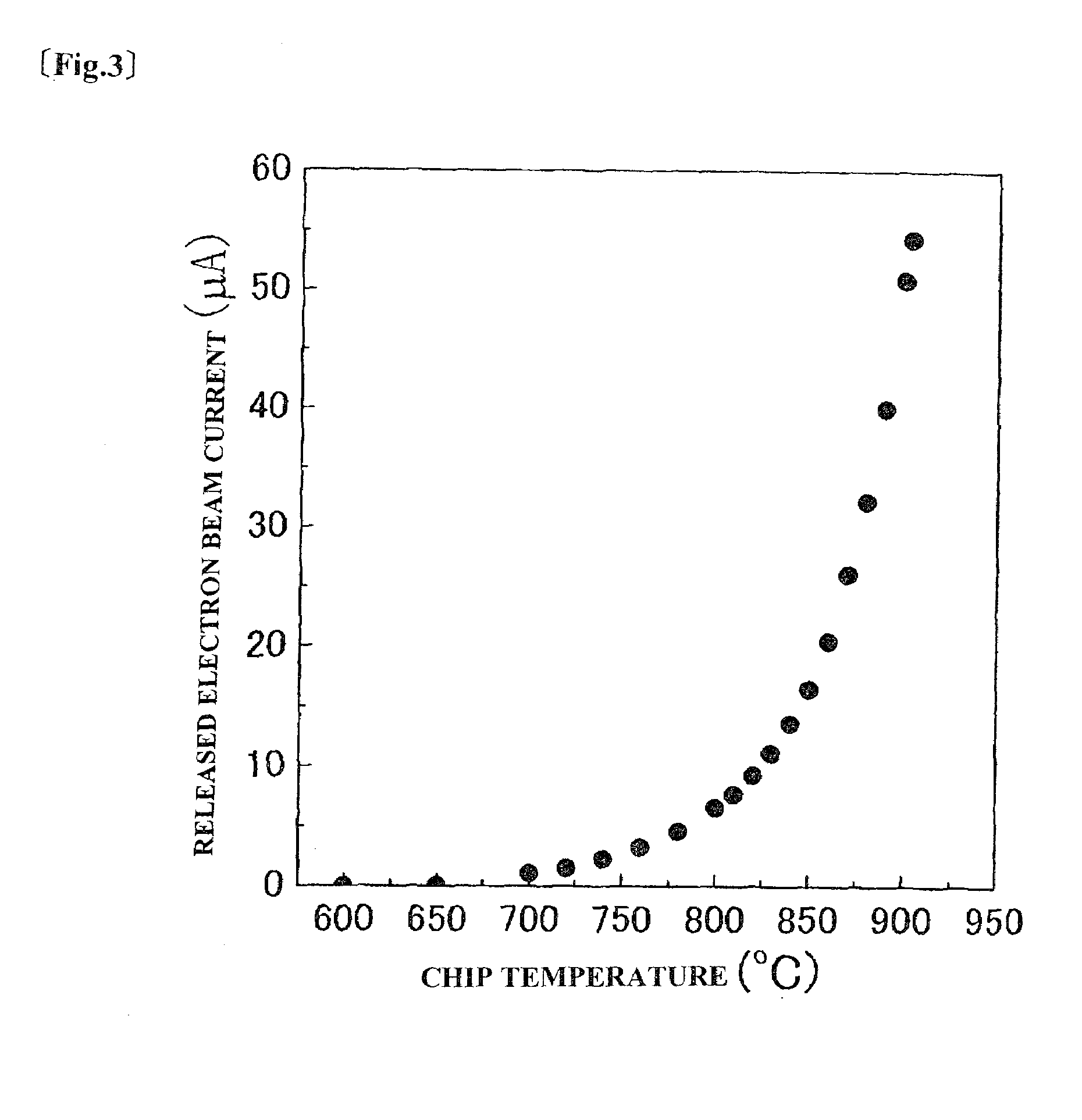METALLIC ELECTROCONDUCTIVE 12CaO 7Al2O3 COMPOUND AND PROCESS FOR PRODUCING THE SAME
a technology of electroconductive compound and compound, applied in the preparation of alkaline-earth metal aluminates/aluminium-oxide/aluminium-hydroxide, non-metal conductors, etc., can solve the problems of high reactive compound with moisture, chemical instability, and the operation of proposed vacuum diodes, and achieve high melting point
- Summary
- Abstract
- Description
- Claims
- Application Information
AI Technical Summary
Benefits of technology
Problems solved by technology
Method used
Image
Examples
example 1
[0034]The present invention will now be described in more detail using Examples.
[0035]C12A7 single crystal prepared by a Czochralski method (Cz method) was processed into a rectangular parallelepiped having dimensions of 3 mm×3 mm×10 mm, and both surfaces of the sample were mirror-polished. The single crystal thin plate and about 5 g of titanium metal strip were placed in a quartz tube having an inner volume of about 10 cm3 and vacuum-sealed. Thus, five samples were prepared. The five samples were heat-treated under the heat-treatment conditions of sample heating temperatures and heating times shown in Table 1. The electron concentrations and the electric conductivities of the heat-treated samples are shown in Table 1.
TABLE 1Heat-treatmentconditionElectronElectricTemperatureconcentrationconductivitySample No.(° C.)Time (h)×1021 / cm3×102 S / cma90024b1,00024c1,00072>18d1,000120>110e1,10024>115
[0036]The surface of each of the single crystal samples after the heat treatment was black. X-r...
example 2
[0038]FIG. 2 schematically shows a thermoelectric field electron release apparatus. Sample e was processed into a rectangular parallelepiped having dimensions of 0.6 mm×0.6 mm×2 mm. Furthermore, one of the ends of the sample was processed to prepare a truncated conical chip whose end has a flat surface with a diameter of 80 μm. The chip (1) was sandwiched between graphite electrodes (2), and the upper part of the chip (1) was covered with a rhenium metal film (3). Furthermore, the graphite electrodes (2) were sandwiched between conductive members (7) supporting the electrodes (2). The rhenium metal film (3) functions as a component for supplying current to the graphite electrodes (2) even if the graphite electrodes (2) are not electrically connected to the chip (1) and suppresses evaporation of the material from the side faces of the chip (1).
[0039]Current was supplied to the graphite electrodes (2), and the chip (1) was heated. An extracting electrode (4) was provided at a position...
PUM
| Property | Measurement | Unit |
|---|---|---|
| electric conductivity | aaaaa | aaaaa |
| electric conductivity | aaaaa | aaaaa |
| temperature | aaaaa | aaaaa |
Abstract
Description
Claims
Application Information
 Login to View More
Login to View More - R&D
- Intellectual Property
- Life Sciences
- Materials
- Tech Scout
- Unparalleled Data Quality
- Higher Quality Content
- 60% Fewer Hallucinations
Browse by: Latest US Patents, China's latest patents, Technical Efficacy Thesaurus, Application Domain, Technology Topic, Popular Technical Reports.
© 2025 PatSnap. All rights reserved.Legal|Privacy policy|Modern Slavery Act Transparency Statement|Sitemap|About US| Contact US: help@patsnap.com


